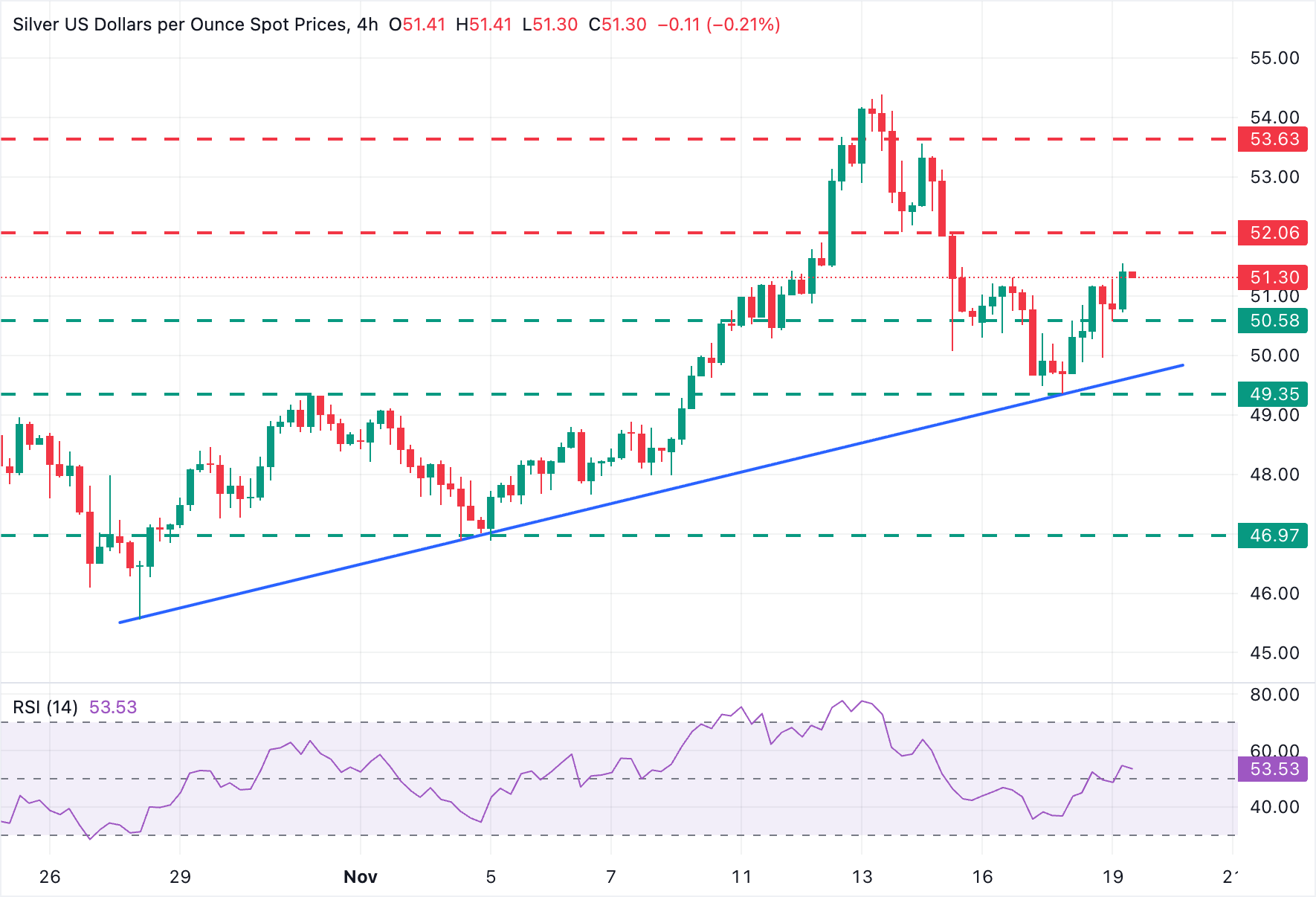Silver Price Forecast: XAG/USD rallies to $51.50 on risk-off markets
- Silver's rebound from the $49.35 area extends to session highs right above $51.50.
- The risk-averse markets and dismal US employment data have given a fresh push to precious metals.
- XAG/USD is gathering bullish momentum, with bulls eyeing resistance at $52.10.
Silver (XAG/USD) appreciates for the second consecutive day on Wednesday, reaching intraweek highs above $51.50, as the risk-averse sentiment underpins support for safe assets like precious metals amid the global equity markets’ sell-off.
Investors’ concerns about an AI bubble have been weighing on equity indexes around the world and pushing traders towards safe assets over the last sessions. Furthermore, US labour figures disappointed on Tuesday, feeding hopes of a Fed rate cut in December, which has given an additional impulse to the white metal.
Technical analysis: Silver bulls are focusing on $52.00

Silver is gathering momentum following a 2.5% rally over the last two days. Price action has breached the resistance area around $51.25 (November 17 and 18 high), and the 4-hour Relative Strength Index (RSI) is consolidating above the 50 level, which suggests that bulls are taking control.
If the pair manages to remain above the mentioned $51.25 level, bulls are likely to test the November 13 low, at the $52.10 area, on their way to the November 14 high at $53.65 and the long-term highs between $54.60 and $54.80.
Intraday support is at the 50.70 area, which closes the path towards the trendline support from late October lows, now at the $49.60 area, and Tuesday's low, near 49.35.
Silver FAQs
Silver is a precious metal highly traded among investors. It has been historically used as a store of value and a medium of exchange. Although less popular than Gold, traders may turn to Silver to diversify their investment portfolio, for its intrinsic value or as a potential hedge during high-inflation periods. Investors can buy physical Silver, in coins or in bars, or trade it through vehicles such as Exchange Traded Funds, which track its price on international markets.
Silver prices can move due to a wide range of factors. Geopolitical instability or fears of a deep recession can make Silver price escalate due to its safe-haven status, although to a lesser extent than Gold's. As a yieldless asset, Silver tends to rise with lower interest rates. Its moves also depend on how the US Dollar (USD) behaves as the asset is priced in dollars (XAG/USD). A strong Dollar tends to keep the price of Silver at bay, whereas a weaker Dollar is likely to propel prices up. Other factors such as investment demand, mining supply – Silver is much more abundant than Gold – and recycling rates can also affect prices.
Silver is widely used in industry, particularly in sectors such as electronics or solar energy, as it has one of the highest electric conductivity of all metals – more than Copper and Gold. A surge in demand can increase prices, while a decline tends to lower them. Dynamics in the US, Chinese and Indian economies can also contribute to price swings: for the US and particularly China, their big industrial sectors use Silver in various processes; in India, consumers’ demand for the precious metal for jewellery also plays a key role in setting prices.
Silver prices tend to follow Gold's moves. When Gold prices rise, Silver typically follows suit, as their status as safe-haven assets is similar. The Gold/Silver ratio, which shows the number of ounces of Silver needed to equal the value of one ounce of Gold, may help to determine the relative valuation between both metals. Some investors may consider a high ratio as an indicator that Silver is undervalued, or Gold is overvalued. On the contrary, a low ratio might suggest that Gold is undervalued relative to Silver.
